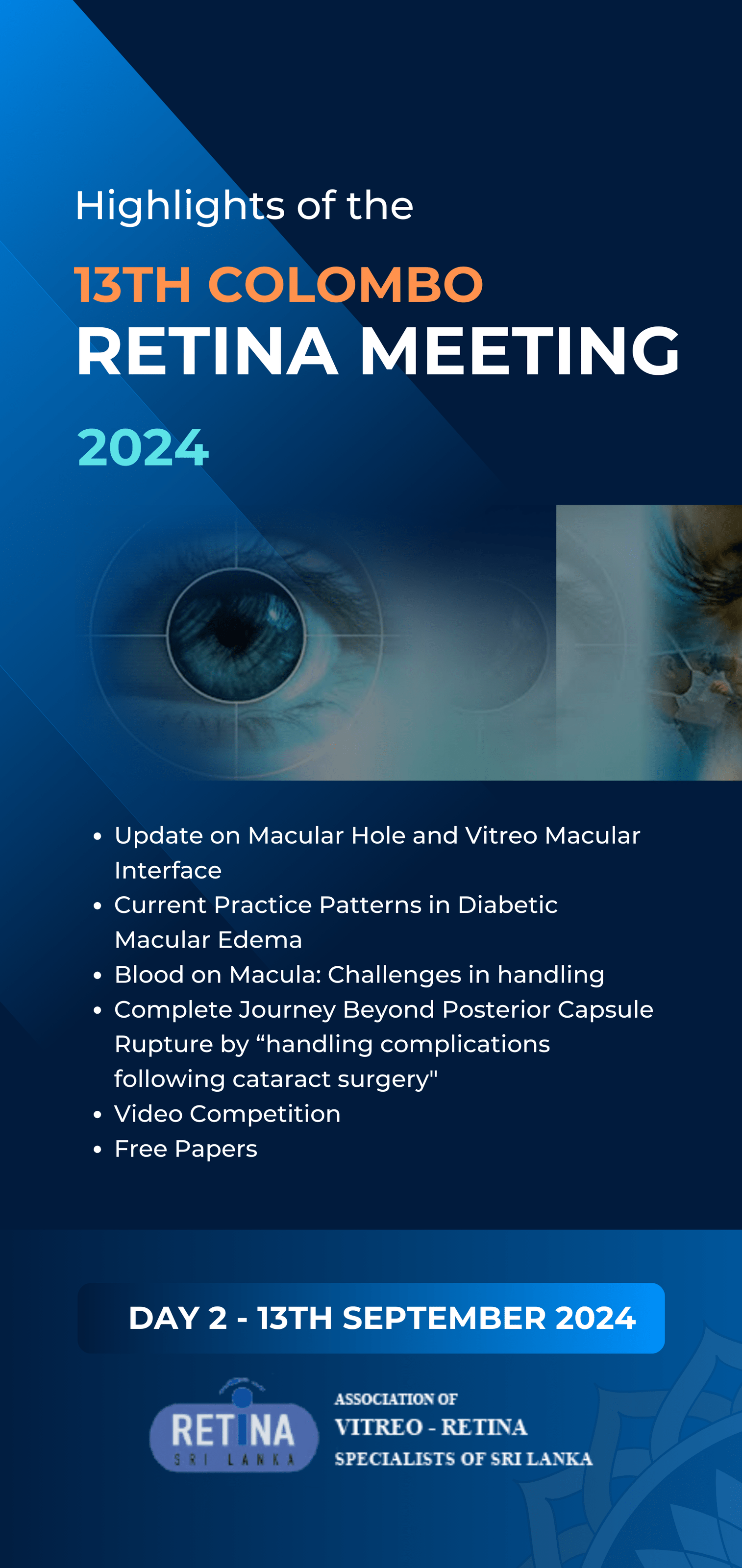1. What is Retina?
Retina is the light sensing delicate sheet coating the inside surface at the back of the eye.
The retina converts light falling on it to electrical signals which travel along the nerve to
the brain. The brain interprets these signals to “see” the world around us.
2. What is a Retinal detachment?
Separation of Retina from the inside wall of the back of the eye, like a large curtain in a
room has fallen from the wall. Your retina needs to be attached to the back of the eye for
its survival and to work properly.
3. Is it a blinding condition?
Yes. It is a potentially blinding condition if not treated and you will lose all or some of
your vision.
4. How do I know beforehand I am going to have a retinal detachment?
These are the warning signs of a retinal detachment according to order of occurrence
Floaters-Shapes like dots, rings, flies, spiders or spider legs, cobwebs passing or floating
across your vision which is recent onset or worsening of a existing floater.
Flashes-Flashing lights or feeling like lightening at the edges of your vision which is recent
onset or worsening of existing flashes.
Shadow in the field of your vision- A dark shadow coming towards the centre of your
vision from the edges of your vision maybe a sign of detaching retina progressing to
involve the centre of the back of the eye.
Blurring of your vision.
5. Do everyone with above symptoms develop retinal detachments?
No. Many people have floaters and flashes and that is normal to their eyes. But if you
develop new floaters and flashes and if you notice worsening of existing floaters and
flashes you have to worry about and get your eyes tested by an Ophthalmologist or a
Vitreo-Retinal surgeon.
6. How my eyes will be tested if I have above symptoms?
Your pupils will be dilated with drops to have a good view of the back of your eye. When
the pupils are dilated your vision is blurry and it is very difficult to see the light and you
won’t be able to drive or ride a motorbike for few hours preferably 4 hours. Therefor it is
advisable to go with a somebody for eye examination.
7. How will the detached retina is reattached and repaired?
It is by a major operation by a Vitreo-Retinal surgeon. The steps of the surgical procedure
is as follows
Gelly at the back of the eye is removed by a procedure called a Vitrectomy
Retina is reattached to the wall and breaks or tears are sealed by a welding procedure
called laser or ice treatment called cryopexy to make sure that it remains attached.
Ensuring to hold the retina back to the wall until effects of laser and cryo treatment take
place the back of the eye is filled with a gas or an oil.
8. What happens if I have gas or oil in the eye after retinal detachment?
Gases are dispersed slowly from the eye preferably 6-8 weeks and it depends on the type
of the gas you have in the eye. And you need to be positioned according to the advises
given by your doctor to achieve the success of surgical repair during the first week after
the procedure.
You need positioning with oil as well and need a second operation after some time
(usually after 3 months) to remove oil from the eye.
9. Can I fly with gas or oil in the eye?
You cannot fly with gas in the eye until gases are fully gone from the eye. If you fly with
gas in the eye you will ruin your eye.
But you can fly with oil in the eye.
10. What is the type of anaesthesia I need?
It depends on the patient preference and length and how complicated the surgical
procedure is. But it can be done easily while you are awake (Local anaesthesia) or by
making you to sleep (general anaesthesia)
11. What is the success of retinal detachment repair?
If it is done early preferably within a week at least it is successful 90% of time. The main
aim of operation is to preserve the vision.
12. How soon I should get the operation done?
As soon as possible

